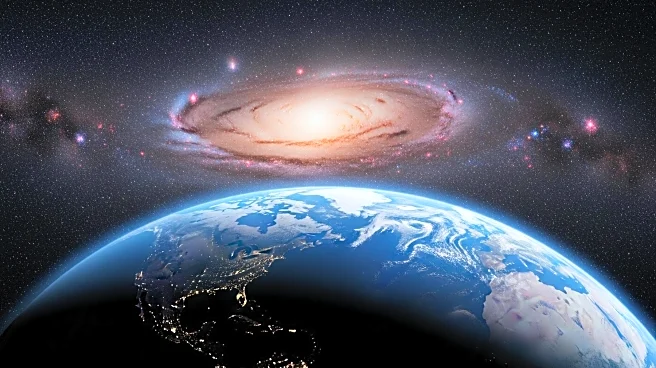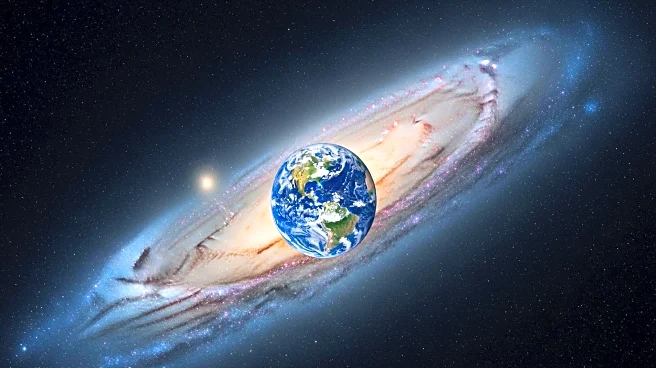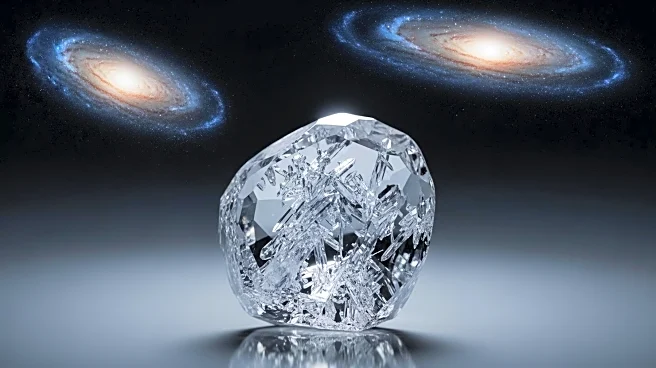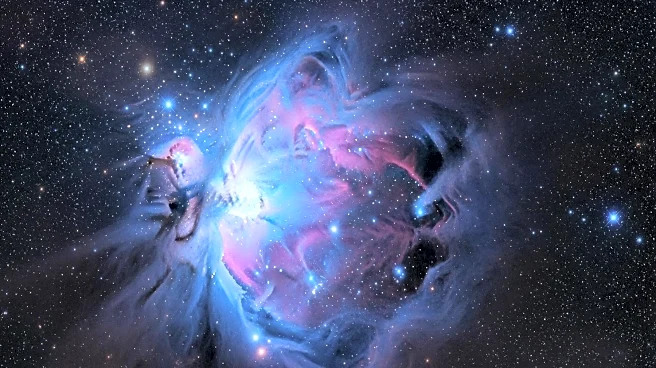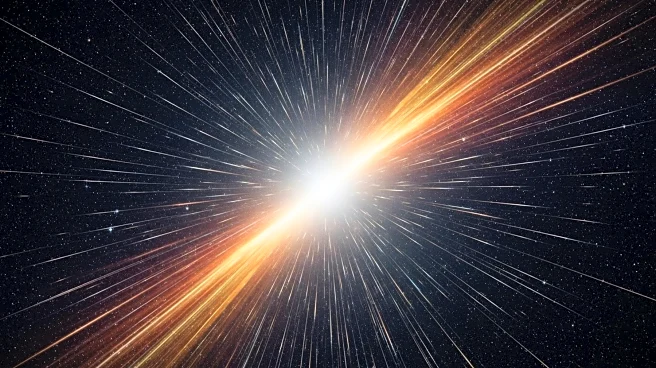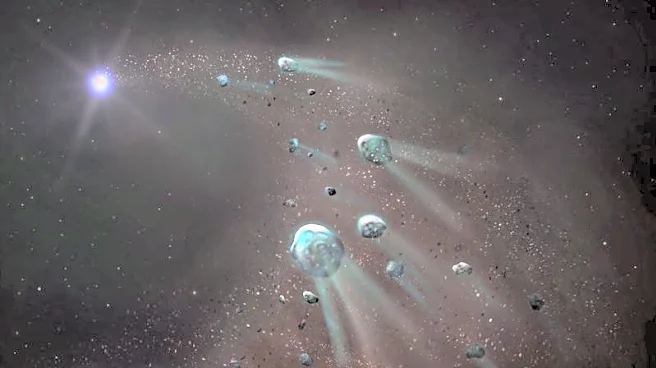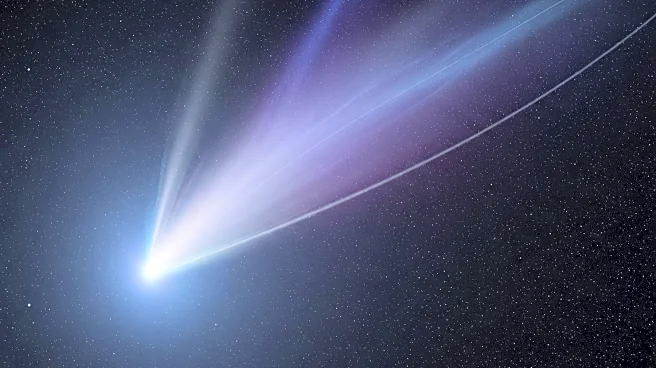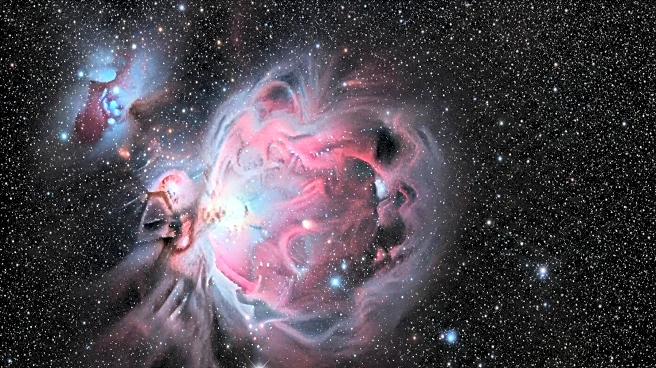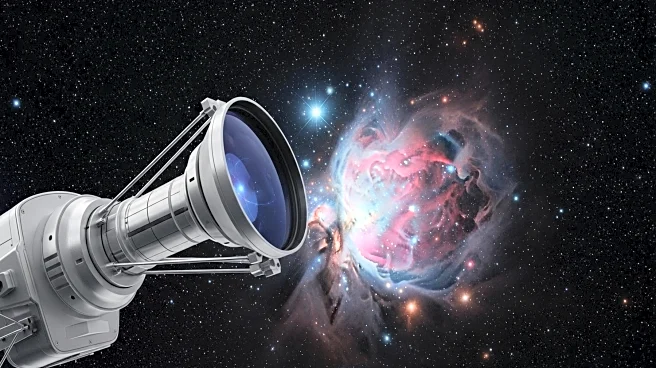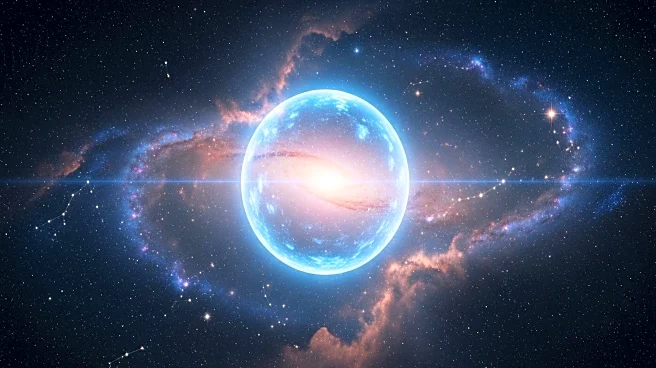What's Happening?
Recent studies have revealed a potential connection between Earth's passage through the spiral arms of the Milky Way galaxy and significant geological changes on the planet. Researchers Chris Kirkland and Phil Sutton have utilized data on neutral hydrogen to map the galaxy's density variations over time, aligning this with zircon isotope records to demonstrate how galactic arm crossings correspond to changes in Earth's crustal dynamics. These findings suggest that gravitational perturbations during these cosmic events may lead to increased activity in the Oort Cloud, potentially sending icy bodies on collision courses with Earth, thereby influencing Earth's geological history.
Why It's Important?
The research underscores the potential influence of cosmic phenomena on Earth's geological history, offering a new perspective on how external cosmic forces might interact with Earth's internal processes. This could have implications for understanding the planet's past and predicting future geological events. The study highlights the complexity of establishing causation between galactic arm crossings and changes in Earth's crust, emphasizing the need for further research to disentangle these effects. Such insights could lead to a deeper understanding of Earth's place in the galaxy and the broader cosmic environment.
What's Next?
Researchers are cautious about drawing definitive conclusions from the study, as establishing causation between galactic arm crossings and geological changes remains complex. Future research will focus on further exploring the correlation and investigating the broader implications of Earth's position within the galaxy. Scientists aim to understand the intricate relationship between Earth and cosmic forces, potentially leading to new discoveries about the planet's geological history and its interactions with the galaxy.
Beyond the Headlines
The study opens up new avenues for exploring the ethical and scientific dimensions of understanding Earth's geological history in the context of cosmic phenomena. It challenges existing models and encourages a reevaluation of how cosmic forces might influence terrestrial processes. This could lead to long-term shifts in scientific approaches to studying Earth's geological history and its interactions with the galaxy.

